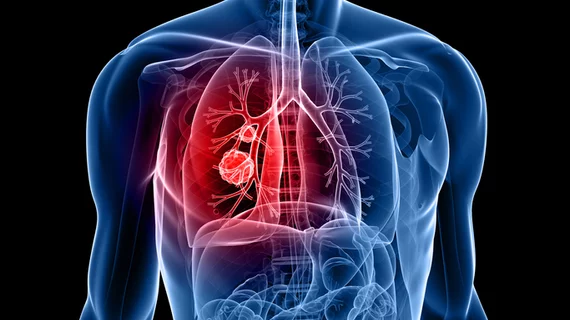Lung cancer screening programs with dedicated coordinators, effective tracking systems boost adherence
When given the proper team and infrastructure, low-dose CT lung cancer screening programs excel at keeping patients adherent to their imaging schedule, researchers reported Friday in JAMA Network Open.
Recent studies have touted the benefits of testing for such lung disease using computed tomography, but few have explored how different types of screening programs impact imaging adherence. To answer this question, Kaiser and University of North Carolina medical experts conducted a study at five academic and community-based care sites, incorporating nearly 2,300 patients. They discovered higher adherence among patients who underwent imaging through a “centralized” screening program, with tools to track and notify patients about their next round of imaging.
Such “hub and spoke” models produced higher patient adherence (46%) vs decentralized programs (35%), while centralized efforts also increased the likelihood of them sticking to their screening regimen by nearly threefold.
“Higher adherence was associated with screening through a centralized program, supporting the investment and value in hiring dedicated program coordinators and implementing effective tracking systems,” Lori Sakoda, PhD, with the Division of Research at Kaiser, and co-authors wrote April 30 in JAMA. “Our findings also reinforce the need for evidence-based practices and interventions to effectively and equitably support screening adherence.”
To reach their conclusions, Sakoda and colleagues conducted an observational study, incorporating 2,283 individuals screened for lung cancer with CT imaging between 2014 and 2018. Patients in the study met U.S. Preventive Services Task Force criteria for regular lung cancer screening and had received negative results at an initial baseline exam, with eligibility to return for another CT scan in 12 months.
Researchers classified screening sites in the study as centralized or decentralized and defined adherence as having obtained that next round of imaging within 11-15 months from the first exam. Sakoda et al. discovered that screening program type was the independent factor most strongly associated with adherence, while age was also a predictor.
“Findings of poorer adherence among younger individuals are especially noteworthy because the USPSTF recently issued recommendations to lower the age range for screening eligibility to 50 years,” the authors noted. “Our data raise some concern that individuals from racial/ethnic minority groups may have lower rates of adherence to LCS, particularly when they are screened through a decentralized program,” they also cautioned.
Further investigations might evaluate barriers to screening adherence, and develop effective interventions to overcome them, the authors advised. Read more of their findings in JAMA Network Open here.

